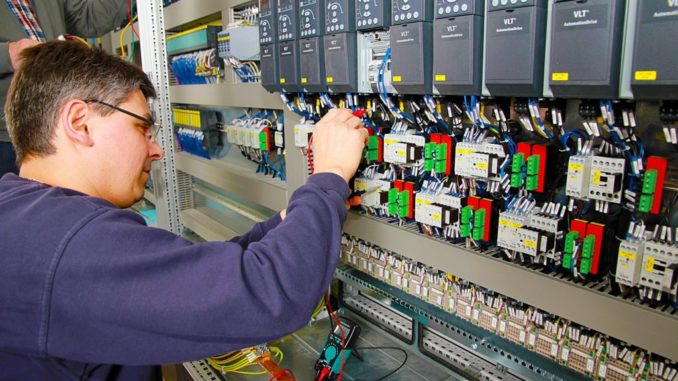
Automation lies at the core of much of our modern lives. However, it evolves at radical speeds. The simple concept, to build a machine to perform a task without human intervention, was the engine of the industrial revolution. Now that concept is the driving force behind robotics, self-driving vehicles, and a wide range of advanced technologies.
Early Automation
Some of the earliest uses of automation include the thermostat, the centrifugal governor, automated looms and flour mills. They were simple, but provided feedback and allowed a task to be performed with fewer human workers. With the development of electrical relays, the complexity of tasks that could be automated grew exponentially.
Closed-Loop Systems
Most automated tasks are part of a closed-loop system. This system is designed so that the outputs are monitored and fed back to the controller. The controller changes its operation as needed. An example of a closed-loop system is a home thermostat, which monitors the air temperature. When the low set-point is reached, a contact closes in the thermostat, beginning a furnace lighting cycle. As the furnace runs, the room air temperature increases until the high set-point is reached. The contact opens and ends the furnace burn cycle. This is automation.
Relay Logic
With electrical relays, it is possible to achieve a variety of automatic functions. A motor starter uses a relay to close a contact that sends electrical power to a motor. In addition, it closes a set of auxiliary contacts that keep the main relay closed. A control mechanism, such as a temperature input or a stop button, can be wired in series with the auxiliary contact. This allows for control of the motor. An expansion of relay logic is the programmable logic controller or PLC. Instead of mechanical relays, a PLC uses a set of input and output contacts connected to a computer controller. Software in the controller then dictates how the inputs and outputs interact. They additionally execute specific patterns of operations, based on programmed ladder logic.
PID Controllers
Proportional–integral–derivative controllers, or PID controllers, use sensors to monitor analog feedback signals from the process it is operating. Next, it makes real-time adjustments to keep a machine working within set boundaries. An example of a PID controller, the electric motor powers a pump with a flow meter. A set point, in this case, a given volume of fluid per hour, is programmed into the PID. As the measured value drops below the set point, more power is applied to the motor by use of a VFD. This constant monitoring keeps the process operating at peak efficiency and within engineering limits.
Computerized Control
A large industrial factory utilizes a centralized computer to control a combination of PLCs and PID controllers. They can accept inputs from other sensors and switches as well. By integrating a range of controllers, a high degree of precision is achieved, either through logic programming or computer algorithms.
Changes to the process can be executed in real-time to keep the factory or plant operating efficiently and safely. An example of computerized control is a self-driving car. It uses GPS data, cameras, and Lidar to detect the road, signage, other vehicles, pedestrians, and obstructions. These inputs are fed into an onboard computer. Complex algorithms calculate the correct sequence of operations and send signals to actuators and relays, which operate the car. The closed-loop system sends continuous feedback data to the computer. Consequently, it performs course adjustments in real-time as new problems emerge.
Automation is a constantly evolving field. As new technologies emerge, so too will new opportunities to improve efficiency and convenience for our automated world.

